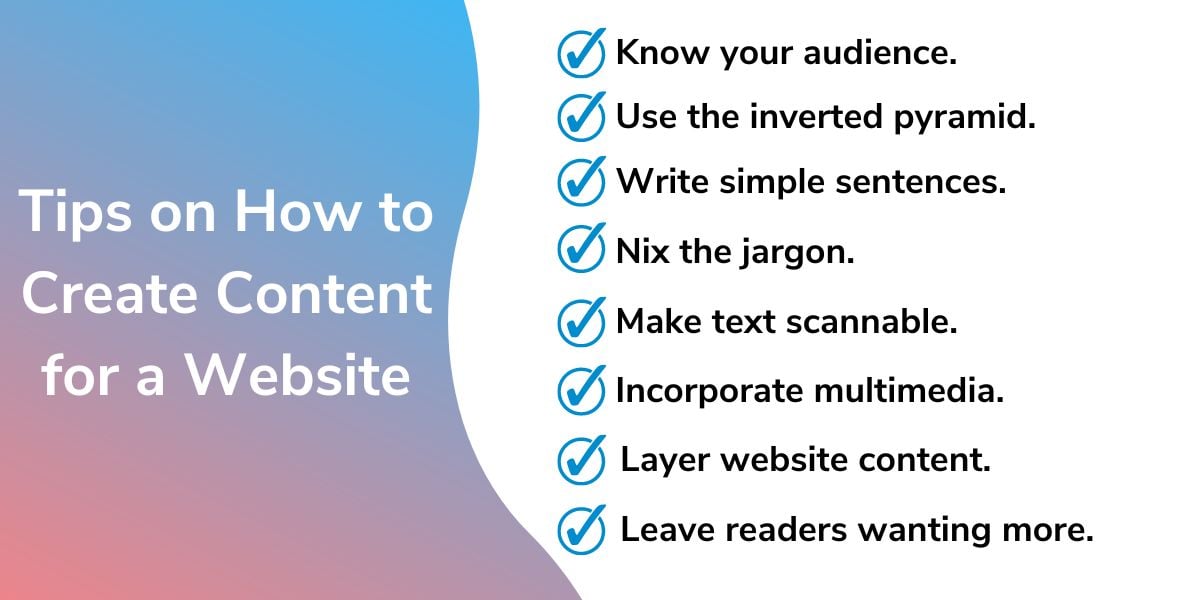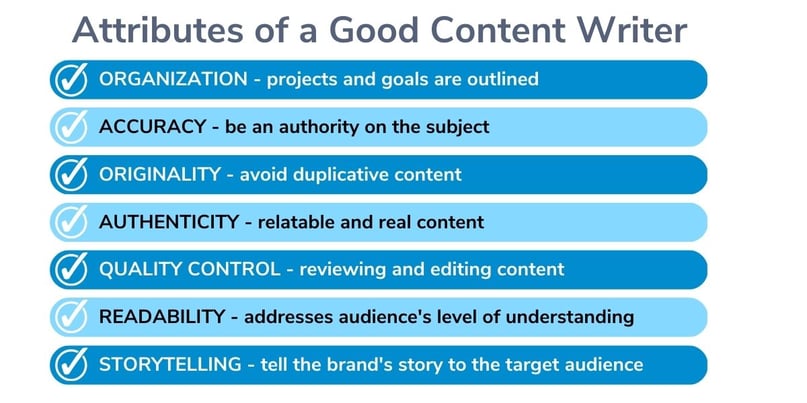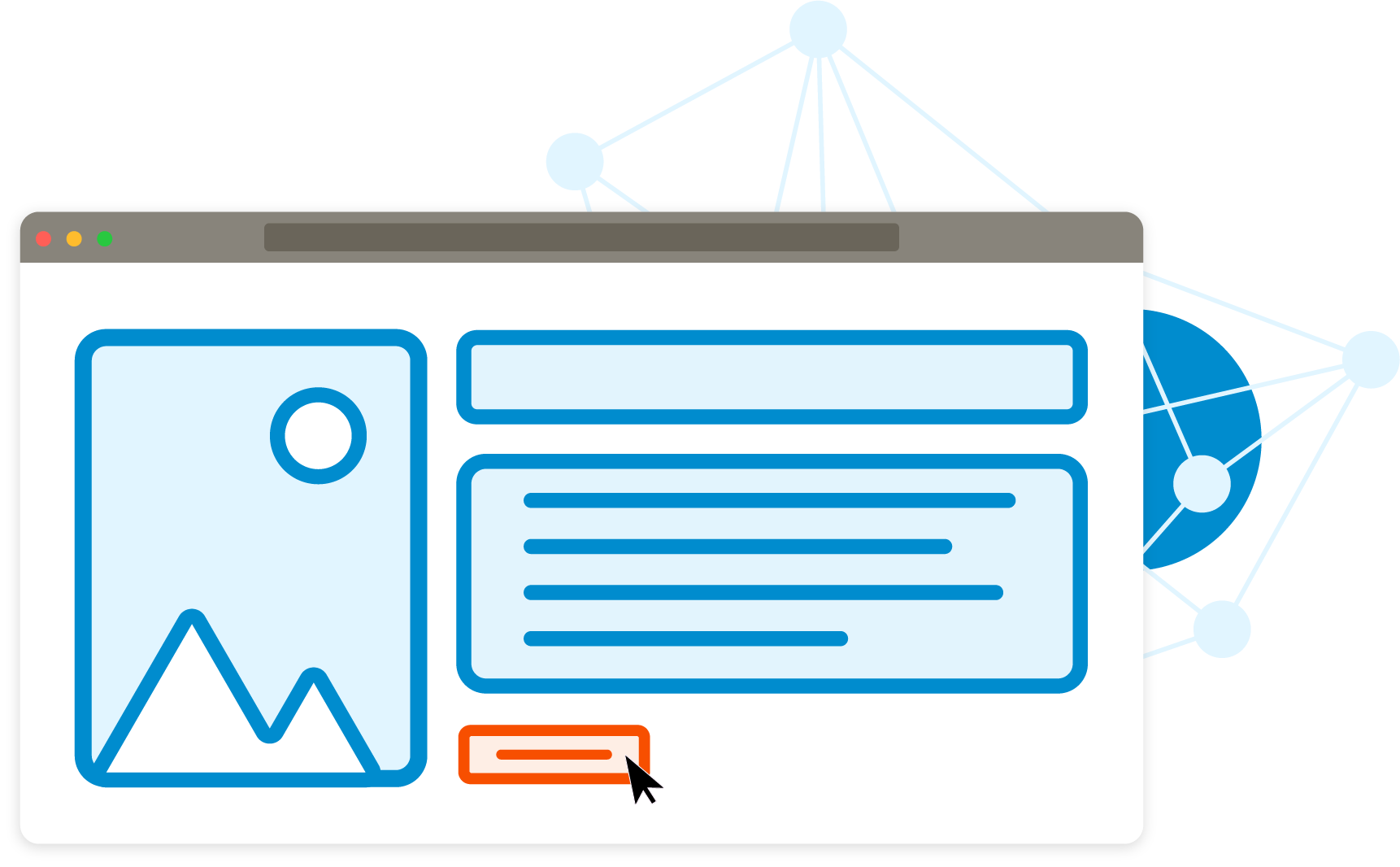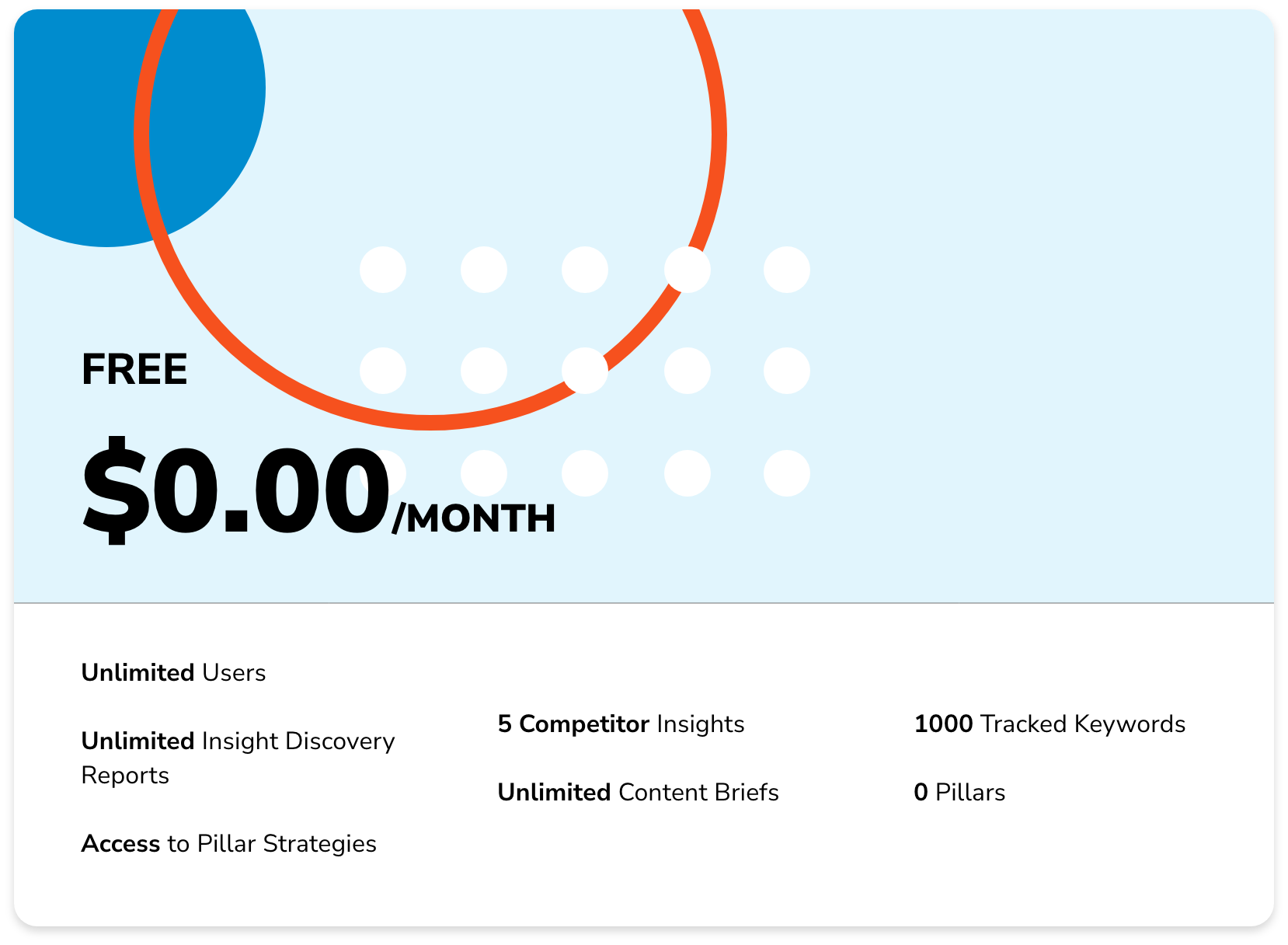A Guide to Creating Great Content
Since the arrival of the web as a publicly used service in 1991, the open space has allowed almost anyone to create a website and add content accessible to anyone with an internet connection. Websites such as Yahoo (‘94), Amazon (‘95), eBay (‘95), and Google (‘98) were the new firsts to launch on the Internet. By the time Facebook debuted in 2004, there were more than 51 million websites, according to Internet Live Stats. Today, there are an estimated 1.7 billion websites on the internet, and that number continues to grow.
With the unfathomable amount of content out there, capturing an audience for your website can seem daunting, maybe even impossible. But just because there is a lot of competition, doesn’t mean it’s impossible to climb the ranks and promote traffic to your website.
The key to success is in your website’s content. Many people may ask, “What is the importance of choosing the appropriate content for your website?” Let’s discuss exactly why the right content is so important in driving the right traffic to your website.
Organic searches are the unpaid search results that show up on Google or other search engines. These results are based on relevance to the user's search query, links, domain authority, and other organic ranking factors.
Making your website perform at the highest level is essential to showing up in these organic searches and taking hold of potential leads. But how do you perform at the highest level? Having a strong website content presence including utilizing the best search engine optimization (SEO) practices, providing quality information to your audience, and demonstrating the appropriate content for your brand—is a vital step in taking your website to the highest level possible in today’s internet age.
When executed correctly, not only will your website’s content help you show up in organic search results, but it will allow your customers to understand who you are and what your brand is about. Your website’s content should tell your brand's story, and in turn, help your customers understand the solution to their problems—your product or service. You want the customer to feel connected to your business, and to do that, you have to know your customer’s expectations and the questions they are asking, then create quality content in response.
As we dive deeper into website content, keep in mind that a value proposition is to provide the information your customers are looking for.
What is Website Content?
Website content is the textual, visual, or aural content that the user experiences on a website. Website content can include text, images, sounds, videos, animations, and many other elements. It can be argued that website content is the most important tool in helping achieve your marketing strategy and communicate with your customers. Making sure your content is on-brand while communicating effectively and engaging your customers is the utmost important step in generating solid leads and promoting steady growth in your business.
What should website content include? There are many forms website content can take, and choosing the right content for your website is important in growing a steady flow of targeted traffic. The types of web content including written, video, audio, and graphic content. Let’s take a closer look at each of these:
- Written content: The written content on your website should inform all other content of your website. Written content can encompass a call to action or brief product description on your landing page, case studies, white papers, industry reports, ebooks, testimonials, and blogs.
- Video and audio content: Video and audio are also very valuable pieces of content that should be included on a website. This includes explanatory videos, podcasts, and possibly music. 96% of people have watched an explainer video to learn more about a product or service.
- Graphic content: Photographs, fact sheets, infographics, branded images, and data visualizations are considered graphic content. Graphic content is generally supported by written and video content and has the opportunity to help your audience visualize what your brand is about.
The written content is arguably the most important content on your website. For optimal SEO in 2024 and beyond, websites should have an average of 650-3,000 words per page. Websites with less than 300 words per page are considered “thin” by Google's standards and, most likely, won't rank as highly in search.
What is Website Content Writing?
Website content writing is the process of planning, writing, and editing web content, typically for digital marketing purposes. From a call-to-action statement to a blog post, your content writing should tell the story of your brand or product and make your audience feel connected to your business.
Many website’s written content comes in the form of landing pages and blogs. According to Hubspot, 77% of internet users read blogs. And websites that have a blog have 434% more indexed pages.
The way blog content is written and organized has come a long way since the start of blogging in the mid-90s. The days of simple HTML structure and a freeform post of someone's thoughts has morphed into a content marketing tool that uses strategic, SEO-driven stories and educational content that can be accessed with a simple keyword search. Companies who harness this tool correctly can take advantage of the wide profit margins and outcomes that come with writing strategic content on their blogs.
An example of blog content can be seen in a B2B company that sells artificial intelligence to healthcare companies. The blog on this AI company’s website could be used to educate healthcare executives on how artificial intelligence works and can be beneficial within the healthcare system. Another example could be with a B2C company that sells holistic cosmetics to consumers in their 20s-30s. They could create SEO-driven content centered around dermatology practices and how their products are solutions to common skincare problems in their targeted age range.
Some other website content writing examples include white papers, case studies, marketed emails, industry reports, copywriting, and ebooks. These are all examples of written content that you can layer into your website and blog, and there are many more as well. There are easily over 100 different types of content you can use to try to reach your customers, but what matters the most is knowing what type of content is right for your company and what kind of content your customers are looking for. There is a difference between writing random content and writing the content that your website needs.
How to Write Good Content for a Website
Many people struggle and ask the question“How do I fill a website with content.” That can vary from company to company, because each company’s audience, product, and values are different. Don’t just fill your website with a lot of meaningless or unstrategic words. Instead, focus on how to provide good, meaningful content to your customers.

Now, let's break down the tips on how to create content for a website:
1. Know your audience
Before drafting content, ask yourself these questions: Who is my primary audience? What about a secondary audience who can influence and inform my primary audience? How will they find my site online? Remember that your audience is humans. What you say to them depends on their level of understanding, their interests, how they get to your website, and what questions they are asking. Your website content should center around your audience’s needs and questions.
2. Use the inverted pyramid
When writing a blog post, the first sentence under every header should state the most important information first, then follow up with supporting info. Although it can be tempting to provide background information before diving into the answer, getting straight to the point and making sure to answer the question your audience is asking is the top priority.
3. Write simple sentences and stick to active voice
It’s great to be poetic for certain occasions, but for most website content, it’s best to stick with short, simple sentences. Sentences that are murky and long makes for hard-to-follow content that will lose the reader’s interest.
In the same manner, use active rather than passive verbs, and specify the subject of the sentence. For example, rather than writing “products can be ordered on our website,” say “You can order products on our website.”
Active voice helps create succinct, reader-friendly sentences. It’s also more direct; when you speak directly to the audience (“You can do it”) it’s more engaging than saying “It can be done.”
4. Nix the jargon
The web is for everyone—not just technical experts. So make sure information is understandable for the educated non-specialist. Spell out acronyms on first reference. Avoid insider language. Explain complex or niche terms. And provide hyperlinks to other articles where readers can get more background information on a particular topic.
5. Make text scannable
In addition to all the above, make sure the text is organized and easy to skim. Most web readers will scan the page to find the specific piece of information they’re looking for—if they don’t find it easily, they’ll move on.
- Instead of text-heavy paragraphs, use bulleted or numerical lists. Instead of one long page of text, organize content into labeled tabs.
- Always include “white space.” This is the empty space that surrounds paragraphs, images, and other elements on your web page. Though it may seem like this is just wasted space, it’s actually a web designer’s best friend. Comfortable amounts of white space around text make it more legible and more enjoyable to read.
It’s also important to divide content into sections with descriptive sub-headers. These sub-headers not only help readers navigate the page, but they’ll also help search engines find your content.
6. Incorporate multimedia
Research shows that most of the human brain is visual, and people process visual information many times faster than text. An easy-to-read chart or graph can also do a better job of explaining a complex topic than text alone.
7. Layer website content
The great thing about a website is that it’s easy to direct readers from one page to another. Help readers find more great content by hyperlinking certain words or phrases to other relevant resources, especially those on your own website. This will help keep people engaged with your content and moving through your site. Building these internal links within your own site also helps your SEO, but keep in mind that links should always be relevant and helpful. Visually, if you overload your text with links, people won’t know what to click on. Google recommends keeping the number of hyperlinks on a page to a reasonable number. A good rule of thumb for internal linking is to only link when you’re referring to something that you can’t expand on within the same post. Also link out to external sources that you’re referring to, such as a quote or a statistic.
8. Leave readers wanting more
Good websites end each page with a strong call to action. Keep these calls to action succinct, and start them with action verbs like “Download,” “Share,” “Join,” “Sign Up,” “Learn More,” or “Watch.” And of course, make sure to include a link that actually allows readers to fulfill the action you’re asking them to take.
Website Content Checklist
Before publishing content, make sure every page of the website has clear copy and a clean design that is relevant, valuable, and trustworthy. Each page should have at least one call-to-action you want your readers to take. It’s also important to have no distractions in your content or website design and to minimize friction where possible.
Before publishing your website content, ask yourself these questions:
- Am I using jargon or meaningless words?
- Is what is important prominent?
- Are my pages clearly defined?
- Is my content generally relevant to my target audience?
- Am I putting my audience's needs first?
- Do I have actionable tips or a call to action?
- Is my call to action clear and visibly prominent?
- Are my grammar and spelling correct?
- Are my claims supported with evidence?
- Is my website free of distractions: e.g. intrusive pop-ups, autoplay visuals or audio, and too many ads?
- Am I meeting my customer expectations on where to find certain information?
- Is my writing well-formatted and scannable?
How Do I Start Content Writing?
Are you wanting to be a website content writer? Writing is hard work and many businesses don’t have the time to write the level of quality content they need for their websites. Website content writer jobs are becoming increasingly in demand to keep up with the rapid growth of the industry. When starting to write content for a website, keep these points in mind.

These are what companies are looking for when choosing a content writer:
1. Organization
The best content writers devise a content strategy that will work for them to keep up with the amount of content they’ll be writing. Organized writers make sure projects and goals are outlined, and clear so they know the purpose of every article.
2. Accuracy
SEO content that is inaccurate or misleading undermines the perception of a company as an authority on the subject. Website content writers are trained in conducting research and using sources so that the information is correct.
3. Originality
The best content writers write and publish content that is completely original. Duplicate content is more common on the internet than you think. Plagiarism is obviously a big no-no, but the same content showing up on the internet also doesn't help SEO practices.
4. Authenticity
When a customer comes to a website, they’re looking for original, authentic content that relates to their problem or situation. Fake content lacks substance and transparently exists to promote the business to the consumer. Customers can tell the difference between real and fake content, and they tend not to trust companies that only put out the latter. Apart from ensuring accuracy and originality, content writers produce real, substantial content.
5. Quality control
Good content writers make sure their content goes through several layers of quality control before publication, this includes reviewing content and making copy edits, proofreading, and checking for accuracy and originality.
6. Readability
Making sure content is readable and addresses your audience’s level of understanding is important so the content is accessible to the audience. Content writers gauge the readability of their material and make sure it falls within the designated range.
7. Storytelling
Not only is readability important, but so is telling a story. A writer’s goal should be telling the brand’s story to the target audience. Make the audience feel connected to the company, rather than just telling them about the company.
If you’re looking to become a website content writer, there are also many services out there that allow you to enhance your skills. Keeping up with the latest industry trends and practices is vital to succeeding in the profession.
A web content writer's salary can range anywhere from 25k-78k a year depending on the level of experience. If you’re a company looking for a website content writing service, this is also a good list to refer to when hiring a writer internally or outsourcing your content writing.
Get Your Website Content Writing Right with DemandJump
Creating website content is hard, no doubt about it. Balancing content strategy, generating blog topics, utilizing SEO, and then executing the writing process can be tricky. But to successfully resonate with your current and potential customers, you need to understand their needs, feelings, and values. The number of websites on the internet continues to grow and there's no sign of it stopping. The internet has changed the ways businesses market to consumers. Having the platform you need to reach your customers is key to success in every industry.
So where do you even start with your website content? We understand it can be overwhelming to look at your website and be uncertain of where to start when it comes to creating professional, meaningful content that will reach your customers. That’s why we created DemandJump.

We offer content marketing tools that cut through the internet noise and let you know exactly what your audience is looking for. Our platforms can help you write content that meets your customer’s needs, and in turn, climb higher in the search engine ranks. DemandJump is also for writers who are looking to expand their services and want to provide a more tailored content experience to their clients.
Our intuitive consumer reports showcase what your audience is searching for, provide SEO content strategy, aids in content ideas with a blog topic generator, help you create a website content template to structure your ideas around, and more.
With our platform, you’ll no longer have to ask how to generate content ideas. There are plenty of websites out there detailing strategies on how to find website content ideas. However, just because you have an idea, doesn't mean it will be successful. Knowing exactly what your audience is searching and the questions they’re asking is key to developing excellent content that will trigger results. Using cross-channel analytics, our platform will help you find the top of search results that give you a complete look at the customer journey through each stage of your content.
See it in action yourself. Get your website content right with DemandJump. Try it free!














